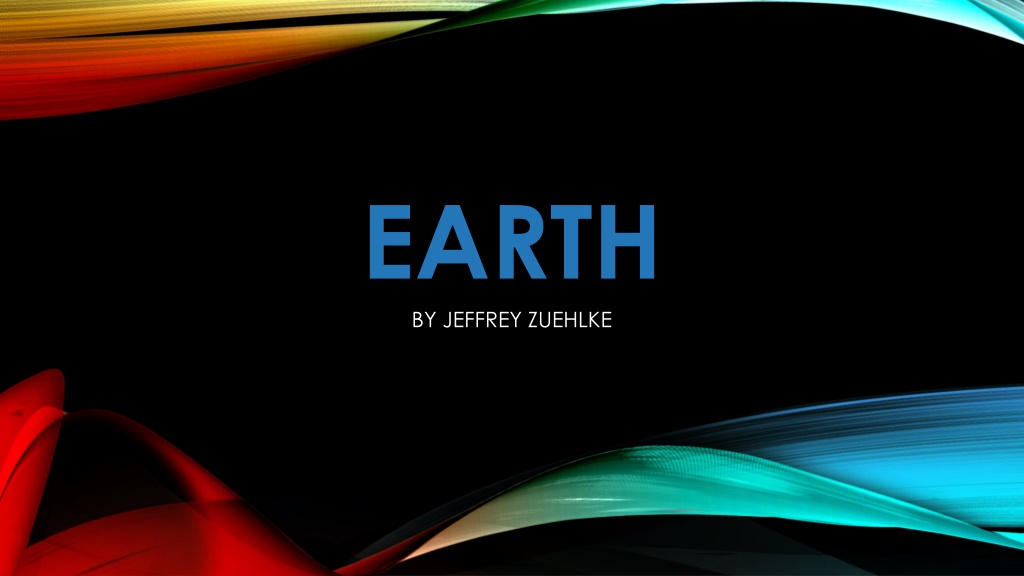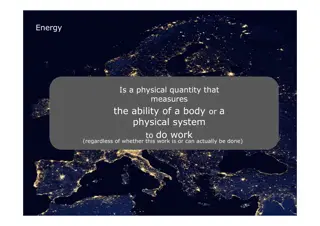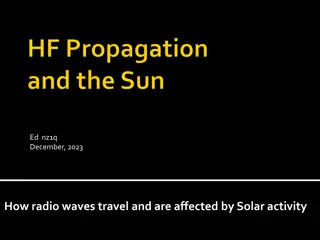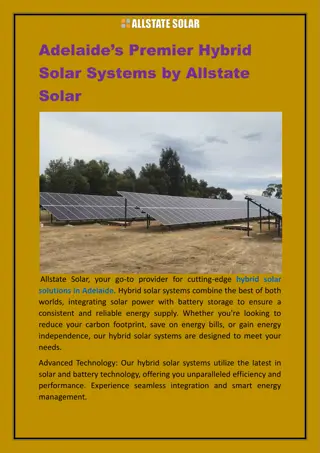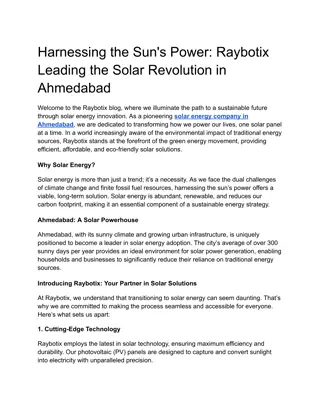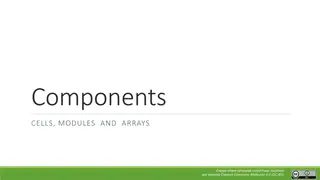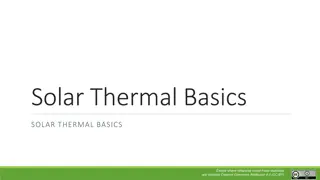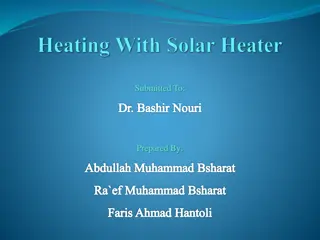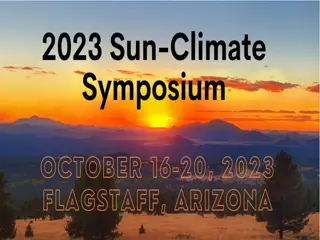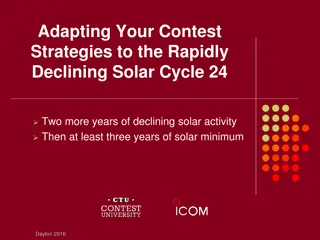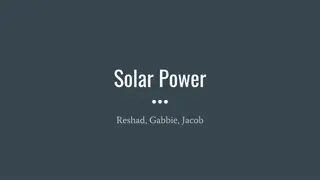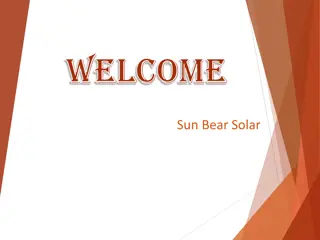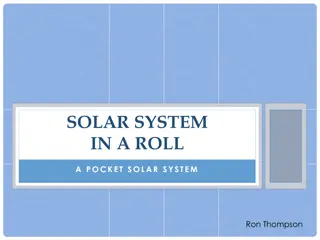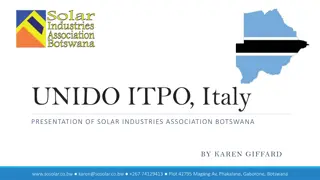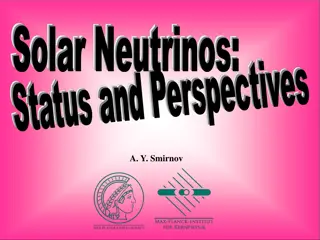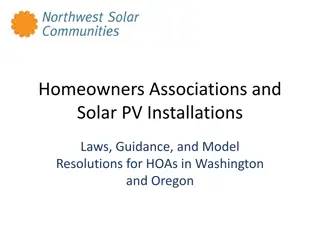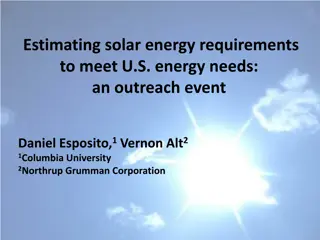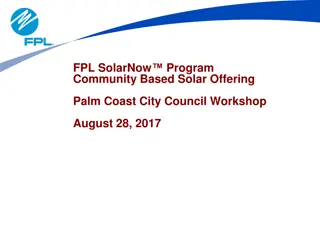Based on the provided content, here are the requested elements: "Journey through our Solar System
Explore the wonders of our Solar System, from our home planet Earth to the rocky and gas giants, learning about their unique characteristics, orbits, and rotations. Discover how each planet plays a vital role in the vast expanse of space surrounding the Sun.
Download Presentation

Please find below an Image/Link to download the presentation.
The content on the website is provided AS IS for your information and personal use only. It may not be sold, licensed, or shared on other websites without obtaining consent from the author. Download presentation by click this link. If you encounter any issues during the download, it is possible that the publisher has removed the file from their server.
E N D
Presentation Transcript
EARTH BY JEFFREY ZUEHLKE
Genre: Expository Text May give information about a science topic Has headings that tell what a section is about Includes text features such as diagrams and maps Compare and Contrast When authors compare, they show two things that are alike. When authors contrast, they tell how two things are different. Authors use signal words such as: both, alike, same, different, to compare and contrast.
OUR HOME PLANET Billions of people and animals live on planet Earth. As far as we know, no other planet has life on it. Earth has water, warmth, and air to breathe. Scientists have learned about Earth by studying space and seeing how different the other planets are compared to ours. Earth is the third planet from the Sun. The Sun is 93 million miles away from Earth. Earth is one of a kind!
THE SOLAR SYSTEM The Solar System includes the Sun and eight Planets. It also includes rocks called asteroids and dwarf planets. The Sun lies at the center of the Solar System and the planets revolve around it. Pluto is a dwarf planet. The planets in order from the sun are: Mercury, Venus, Earth, Mars, Jupiter, Saturn, Uranus, Neptune A way to remember the order is to say this sentence. My Very Excellent Mother Just Served Us Nachos The first letters of each word correlates to the order of the planets.
THE ROCKY PLANETS Mercury, Venus, Earth, and Mars are made mostly of solid rock. These planets are closest to the sun. Earth is the largest of the rocky planets. Earth is the 5thlargest planet and is 8,000 miles wide.
THE GAS GIANTS Jupiter, Saturn, Uranus, and Neptune are planets mostly made of gas. They are the largest planets in the Solar System. These planets are the furthest from the Sun. More than 1,000 Earths could fit inside of Jupiter (the biggest planet)
ORBIT AROUND THE SUN Each planet follows its own path around the Sun. This path is called an orbit. The orbits are elliptical which means they are oval shaped paths. Earth takes 365 days to orbit the Sun. One trip around is equal to 1 year.
PLANET ROTATION Planets spin around on an imaginary line called an axis. The axis runs through the center of the planet from top to bottom. Earth s axis is tilted, which means it leans to one side. It takes 24 hours, or one day, for Earth to make a full rotation.
THE MOON The moon is Earth s closet neighbor. We can see it in the sky at night most of the time. The moon is much smaller than Earth. About 50 moons would fit inside Earth. Our moon orbits Earth . It takes about 27 days to travel around Earth. The moon also rotates, but it takes 27 days to rotate. Since the rotation and orbit are the same amount, the same side of the moon always faces us.
PHASES OF THE MOON The moon changes shape from night to night. Sometimes it doesn t look like the moon is there at all. This is called a New Moon. Other times we see a half or a full moon. Over about a month the moon grows bigger. It will be full for only a night or two.
THE MOON We only see parts of the moon that are lit by the sun. Our moon is 238, 855 miles away from Earth. The moon s surface is made of grey rocks and dirt. There is no life on the moon because there is no air to breathe. There is no atmosphere so the moon gets very hot (253 degrees)and very cold (-387 degrees). The moon has craters, or giant holes/pits. Craters are created when giant rocks or ice from space slam into the moon s surface. These are called meteorites and comets.
